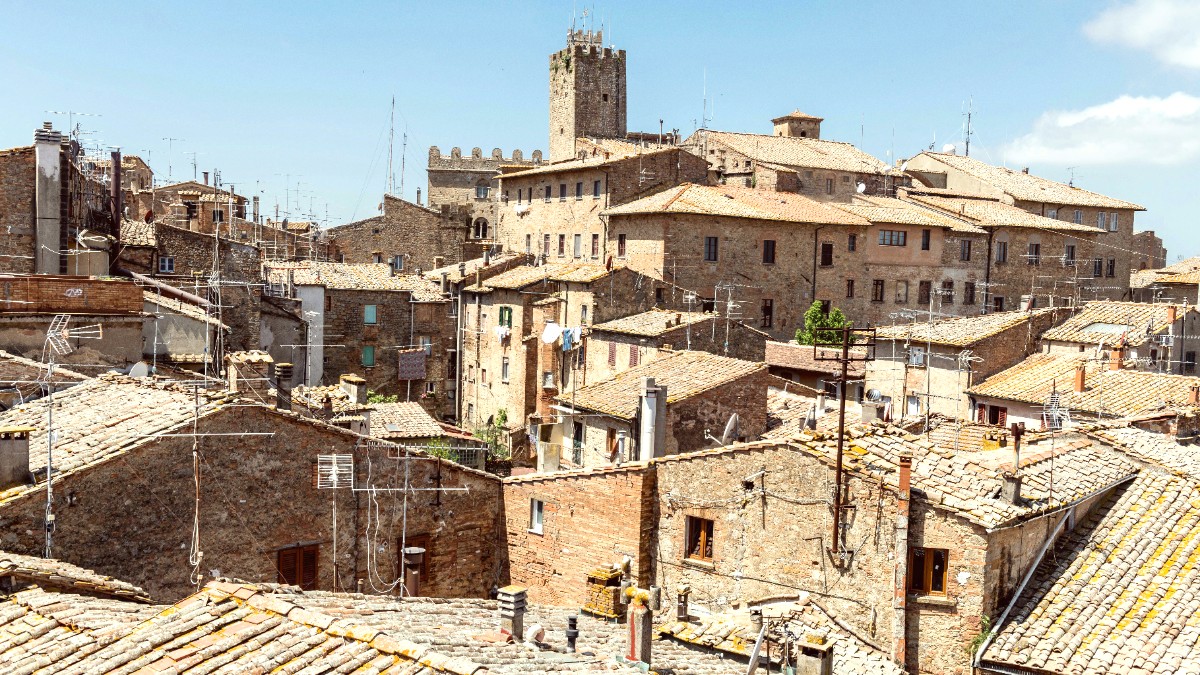
Tuscany, Italy
These sites collectively define Volterra's historical character and are must-visit locations for first-time explorers. Each structure whispers tales of ancient civilizations and medieval power struggles.
From its Etruscan gates to Roman theaters and formidable Medici fortresses, Volterra unfolds its long history through these enduring monuments, inviting contemplation of bygone eras.
Early morning (before 10:00 AM) or late afternoon (after 4:00 PM) are typically less busy times for visits.
Numerous private alabaster workshops ("botteghe") line the historic center, demonstrating local artisans' work.
The Roman Theatre occasionally hosts performances and events. Teatro Persio Flacco stages local plays.
Check the official Volterra tourism website (Www.volterratur.it) or the local tourist office for current special exhibitions and events.
These sites deliver deep insight into Volterra's rich history and artistic heritage.
Observing artisans at work creates unique photo opportunities of the carving process.
Volterra is a treasure trove of historical sites, each sharing a piece of its long and complex story, from ancient civilizations to medieval structures.
Sections of ancient Etruscan walls (4th-3rd century BC) remain visible, notably near Porta all'Arco and Porta Diana, conveying formidable defenses.
A well-preserved Roman theatre and bath complex, sharing archaeological insight into the Roman period.
At the city's highest point, this park contains remains of Etruscan temples, Roman building foundations, and medieval structures, with a panoramic viewpoint.
A Romanesque cathedral (12th century), with Renaissance and Baroque additions, a peaceful sanctuary.
An octagonal structure (13th century) opposite the Duomo, featuring a Romanesque portal and striking interior.
Church of San Michele Arcangelo (distinctive bell tower) and Church of Sant'Agostino (frescoes, wooden ceiling) for quiet contemplation.
Parco Archeologico (Enrico Fiumi Archaeological Park) has green spaces and walking paths, with stunning views of the city. Giardino dell'Ortaccio is a charming public garden within city walls.
Balze di Volterra (Volterra Bluffs): Dramatic, crumbling cliffs created by erosion, demonstrating an uniquely stark beauty, especially at sunset. Other points along the city walls (near Porta Fiorentina and Porta all'Arco) offer Tuscan countryside views.
The Balze forms the most prominent geological feature, a prime example of erosion shaping powerful landscapes. Alabaster quarries in the surrounding hills have shaped Volterra's identity for millennia.
The Fortezza Medicea represents significant military architecture and symbolizes Florence's historical control over Volterra.
Volterra holds several lesser-known spots that present unique insights and experiences away from the main tourist paths.
Explore charming alleys and ancient underground chambers for a sense of old Volterra.
Venture into active workshops and the surrounding countryside for direct connection to local crafts and agriculture.
Exploring smaller, lesser-known villages in the Val di Cecina or Val d'Era valleys for an authentic rural Tuscan experience.
Volterra presents numerous unique opportunities for memorable photographs that capture its character.
The Tyrrhenian Sea, with beaches like Cecina and Livorno, is approximately 40-50 kilometers to the west, offering a change of scenery and water activities.
The surrounding countryside is home to wild boar (cinghiale), deer, and various bird species. Early morning or late evening walks raise sighting chances.
Explore smaller, authentic Tuscan villages in the Val di Cecina or Val d'Era valleys, like Pomarance or Montecatini Val di Cecina, for a quieter experience.
Various plaques and smaller monuments commemorating historical figures or significant events dot the town, enriching its historical narrative.
While not widely accessible, Volterra's alabaster quarries historically underpinned its economy and craft, a geological and economic feature.
Access comprehensive information and practical guidance for your visit.
Support local communities and maintain the town's integrity through conscious travel choices.
Volterra is a testament to layered history and enduring artistic traditions.
Taking the time to appreciate its attractions, both famous and hidden, yields a profound and enriching travel experience.
This section is for future use or to address topics not explicitly covered in the current content for "Attractions & Sightseeing". As all relevant content has been placed, this section remains as a structural placeholder.
Content placeholder 1 for potential future additions related to attractions.
Content placeholder 2 for potential future additions related to attractions.
Content placeholder 3 for potential future additions related to attractions.
Further details may be incorporated as new information becomes available.
Improvements to this guide can stem from traveler experiences and suggestions.
Local expertise and community contributions enrich the comprehensiveness of this guide.
Future iterations may include more granular details on specific historical periods or niche interests.
New affiliate links and external resources can be integrated for additional value.
This section represents a placeholder for potential new categories of attractions not currently detailed.
This space is reserved for information regarding Volterra's environmental efforts or green tourism spots.